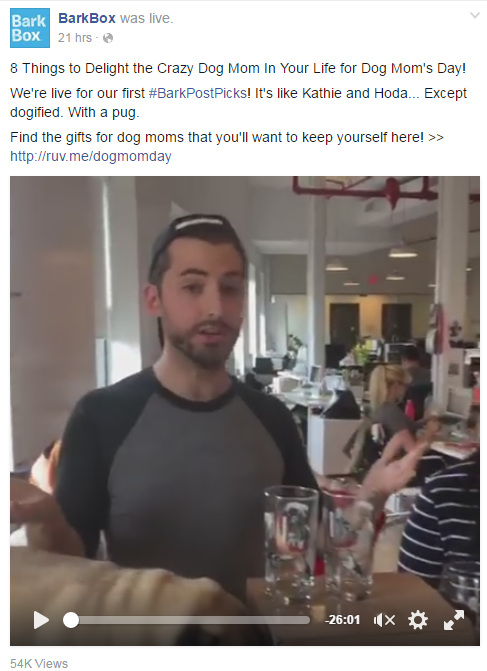Live video on Facebook has become very popular since its initial launch back in December.
According to the social network, live video is watched three more times than regular video. This popularity even led Facebook to update its News Feed algorithm in March to give more prominence to live video. Despite its success, many brands still haven't leveraged the feature to connect with their audiences.
Those that have been hesitant to go live should know that leveraging the feature does have its benefits. For example, live video creates additional content for a brand's Facebook presence because the videos are saved to the company's timeline after the broadcast. What's more, the feature gives marketers the ability to provide behind-the-scenes looks at products, services, company culture, events, etc., and this transparency can increase trust.
Facebook Live Best Practices
Before going live for the first time, however, companies should keep a few best practices in mind, including:
Tease Your Broadcast
To build anticipation for live broadcasts, brands should let their audience know when they will be happening. This information can even be shared with audiences in other channels, such as email, Twitter and Instagram.
Establish a Good Connection
This is a pretty basic - yet important - tip. Facebook recommends using Wi-Fi when possible (rather than cellular data).
Be Descriptive
To get your audience to stop and watch your live video rather than continue scrolling down their News Feed, brands should be descriptive in the post that accompanies the broadcast. BarkBox, for instance, lets its audience know exactly what they can expect from its broadcast, including who is featured and what they will be talking about.

Be Unique
Innovation is important when creating any type of content, but this is especially true for live video. This is because live video is viewed in real-time, which means long pauses or "dead air" can bore an audience and make it difficult for brands to re-engage their viewers. To avoid any awkwardness, brands should create a plan before the broadcast goes live. For starters, establish a goal of the broadcast, an estimated time frame (Facebook recommends at least 10 minutes), who (or what) will be featured and talking points. Some of the most popular types of brand broadcasts showcase special guests like celebrities or industry influencers, provide a behind-the-scenes look at an event, cover a breaking news story or provide a tutorial for a specific topic.
Engage in Real-Time
Audience members can comment on videos during live broadcasts. To foster engagement, brands should respond to these comments and can even call out audience members by name. This helps brands create a relationship with some of their most engaged fans. Popular entertainment publishing company People, for instance, encouraged audience engagement in its video description space by telling everyone that the country music stars featured in its broadcast would be answering viewer questions.
Consistency is Key
While live broadcasts don't need to be a daily activity, brands should use the content type consistently so their audience knows what to expect. Brands should also point out to viewers that by tapping the 'follow' button on live videos they can opt-in to be notified the next time the brand goes live on Facebook.
Go Live!
Creating video - whether pre-recorded or live - can be intimidating, but using these best practices can help engage audiences and provide more brand-audience transparency while increasing organic reach on Facebook so that other posts have a better chance of being seen (without a paid boost).
